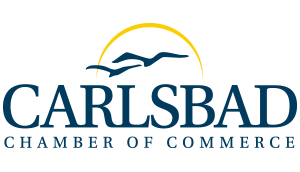By Suzette Lovely, ED.D. Superintendent Carlsbad Unified School District
A hat that cools you off. An app that helps kids with their homework. A reusable bag made from kelp. A comfort care kit for a foster child. A guitar made from cheaper wood that sounds great. A real life model of stem-cell therapy.
All of these unique ideas came from Sage Creek High School students. Some of these ideas just might end up making the world a better place.
At Sage Creek, every student participates in the Genius Project during their junior and senior year English classes. These projects build on Google’s “20 percent time” concept, which gave their employees permission to spend 20% of their work time on whatever they feel passionately about or whatever would benefit Google. Gmail and Google News are examples of “20% products.”
Genius Projects have three attributes: Passion, Challenge, and Impact.
Teachers Shannon Alberts and Amy Kuehl believe that every student has a passion for some-thing and that, by funneling this personal passion into a classroom project, the students will become engaged in their education at a new level. Genius Projects must present a challenge. Students have to select a topic that they will research and learn more about. And the project must make an impact at school, in the community, or even globally. Students are required to work with a community mentor, and they need to create a product, or show tangible or virtual evidence of their project.

Students begin by researching, and then selecting their projects. Next they present their ideas with business pitches, using TV’s Shark Tank as a model, to a panel of parents and other community members. One student wants to learn how to grow her own food in a home garden. How can this project have an impact? Can you blog about what you are learning? How can you use the food you grow to have an impact in the community? Another student wants to create an app that helps students with their homework. How are you going to find a mentor with a computer programming background who can help you learn coding? Another student wants to make “care packages” for foster children so they have the basics they need when they are moved to a new placement. What will the foster system allow them to bring? What are the regulations? How would your packages be distributed? Where are you going to get the funding? Is this a sustainable, realistic undertaking? What resources do we have here in the community to support your work?
The students interact with adults in an academic way — describing project timelines, steps, resources, and inspiration; defending their ideas; and justifying their choices.
Sage Creek is a STEM high school, so many students select projects that involve science, engi-neering, or technology. The projects give the students real world practice in soft skills — such as how to express themselves professionally, how to ask for a business mentor, and how to write a thank-you letter for a college recommendation or job interview.
After two years of work, Genius Projects culminate in a Ted-style Conference, where the whole school is invited to hear the participating students’ presentations.
In teacher Shannon Alberts words, “We say to our students, ‘Look around you. What is needed? What do you notice that you want to change?’ They might investigate a potential college major or career. We hope that this project extracts meaningful purpose from what our students are already doing and from the passions they already have.”
